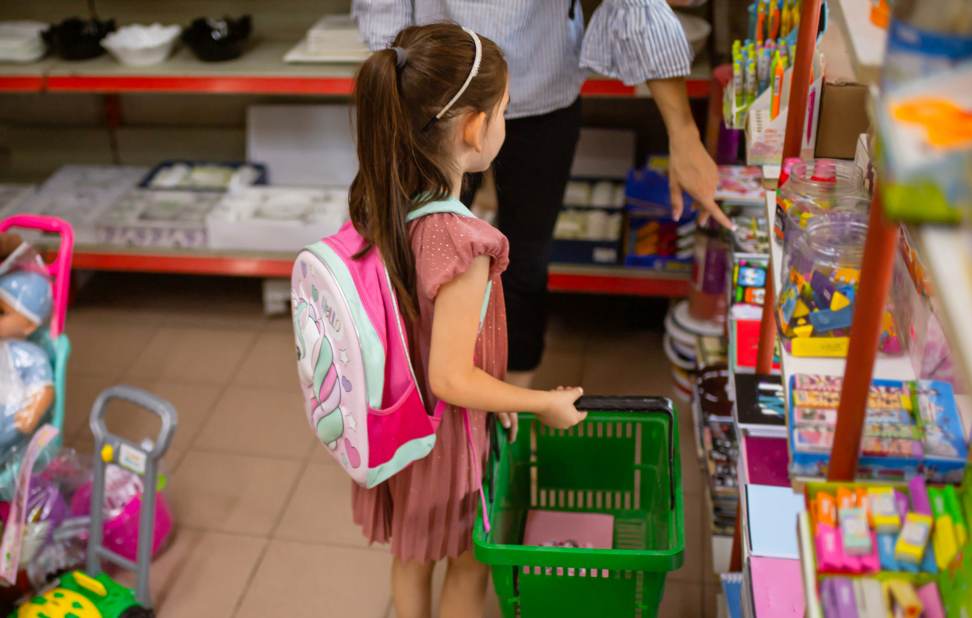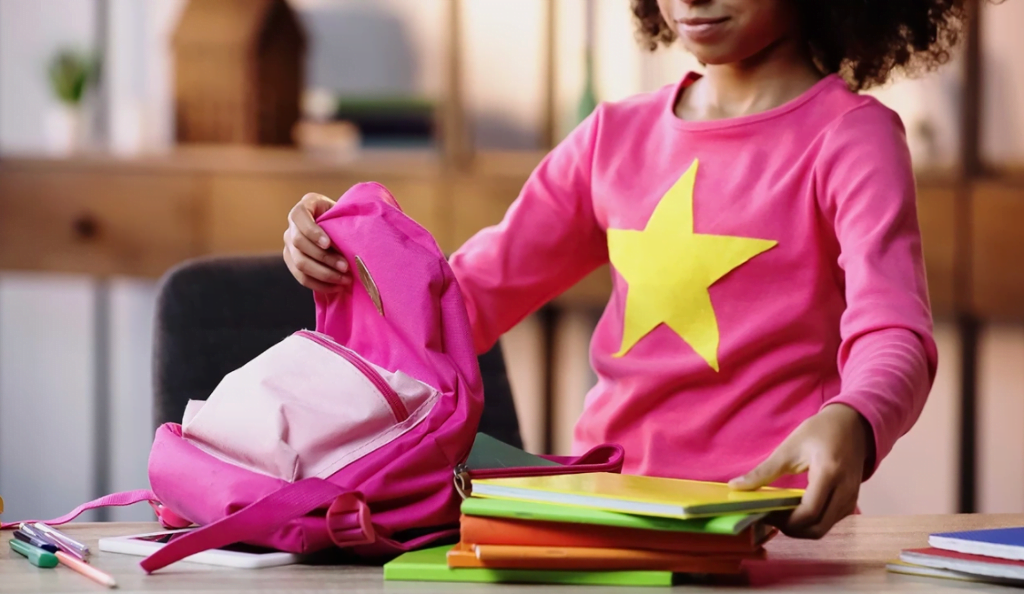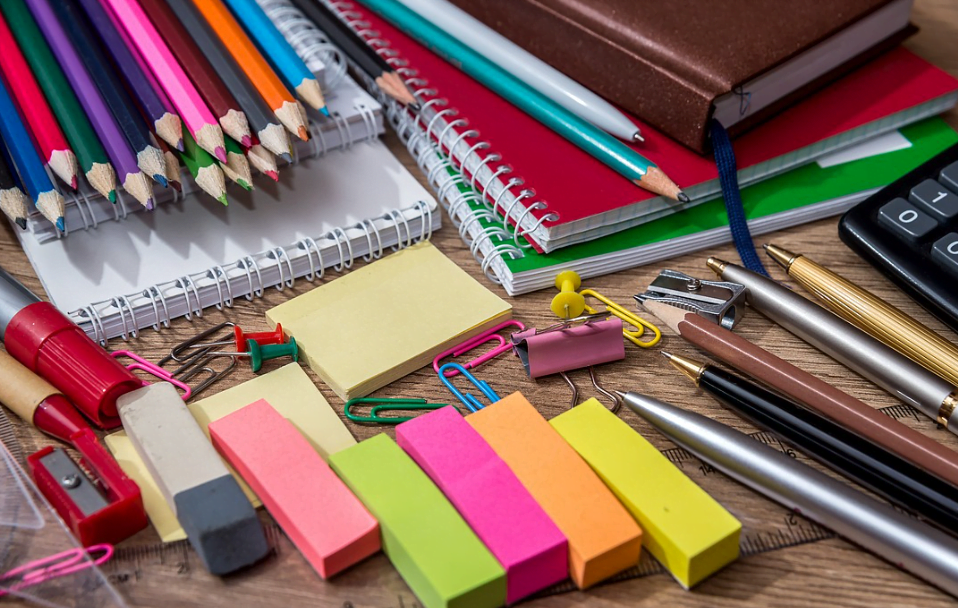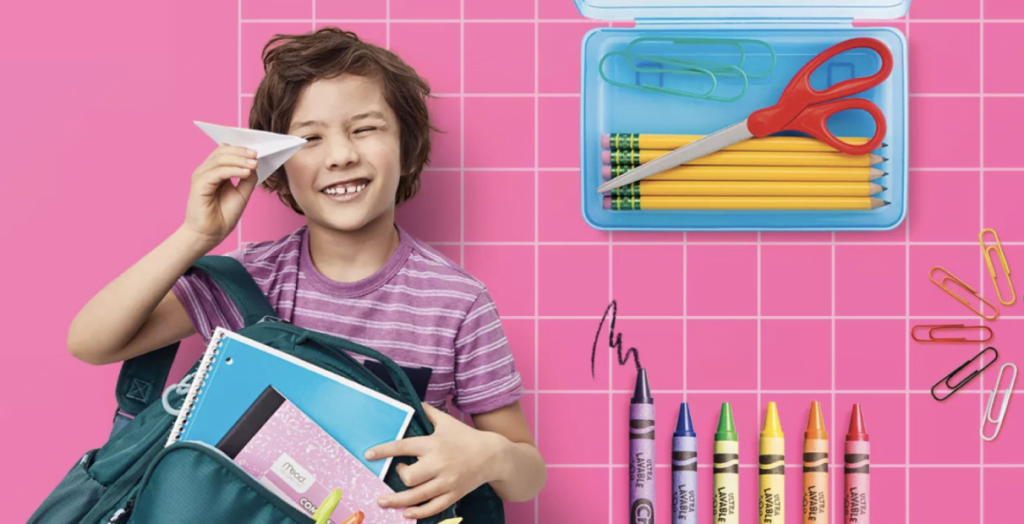school supplies list, A well-prepared student is equipped with more than just knowledge; they are armed with the right tools to succeed. As the school year approaches, the journey back to the classroom entails more than just reuniting with friends and teachers. It’s the time of year when students and parents eagerly delve into the world of school supplies, a vital aspect of educational readiness.
From pens and notebooks to calculators and backpacks, the school supplies list is a roadmap to a productive and organized academic journey. In this article, we will explore the significance of school supplies lists, how they vary across grade levels and subjects, and provide insights into crafting a comprehensive list that sets the stage for a successful year ahead.
School Supplies List
In the intricate mosaic of preparing for a new academic year, one element stands out as a guiding thread: the school supplies list. Beyond the confines of classrooms and lecture halls, this seemingly humble list wields remarkable power. It is a compilation of tools and essentials carefully curated to facilitate learning, organization, and academic success.
From the very first scribbled note to the final exam, the items on this list are the unsung heroes that pave the way for a productive and fulfilling educational journey. In this article, we delve into the significance of the school supplies list, uncovering its impact on students, parents, and educators alike.
Here is a list of essential school supplies for children in the United States:
- Pens and pencils: These are the most basic school supplies and will be needed for note-taking, homework, and tests.
- Notebooks: Notebooks come in a variety of sizes and styles, so it is important to choose one that is the right size for your child and that has enough pages for their needs.
- Folders: Folders are used to organize papers and schoolwork. It is important to have a variety of folders, such as subject folders, project folders, and homework folders.
- Binders: Binders are a good option for students who have a lot of papers to organize. Binders come with plastic sleeves that can be used to store papers, and they also have a place for a pen or pencil.
- Highlighters: Highlighters are used to mark important information in textbooks and other materials. It is a good idea to have a variety of highlighters, such as different colors and types.
- Markers: Markers are used for a variety of tasks, such as coloring, drawing, and labeling. It is a good idea to have a variety of markers, such as different colors and types.
- Crayons: Crayons are a classic school supply that are perfect for coloring and drawing. It is a good idea to have a variety of crayons, such as different colors and types.
- Glue: Glue is used for a variety of tasks, such as attaching papers, making crafts, and repairing torn materials. It is a good idea to have a variety of glues, such as different types and strengths.
- Scissors: Scissors are used for cutting paper, fabric, and other materials. It is important to have a pair of sharp scissors that are easy to use.
- Erasers: Erasers are used to erase mistakes on paper. It is important to have a variety of erasers, such as different shapes and sizes.
- Pencil sharpener: A pencil sharpener is essential for keeping pencils sharp. It is important to choose a pencil sharpener that is easy to use and that does not make a lot of noise.
- Water bottle: A water bottle is essential for staying hydrated throughout the school day. It is important to choose a water bottle that is durable and easy to carry.
- Lunchbox: A lunchbox is essential for bringing lunch to school. It is important to choose a lunchbox that is the right size for your child’s needs and that is easy to clean.
- Backpack: A backpack is essential for carrying school supplies. It is important to choose a backpack that is the right size for your child’s needs and that is comfortable to wear.
This is just a basic list of essential school supplies. The specific supplies that your child needs will vary depending on their grade level and the school they attend. It is always a good idea to check with your child’s school to see what supplies are required.
What are school supplies?

School supplies are materials and items that students need to assist them in their learning and academic activities. These supplies vary depending on the level of education and the specific requirements of the courses being taken. Common school supplies include:
- Writing Utensils: Pens, pencils, erasers, highlighters, markers, and crayons are essential tools for taking notes, completing assignments, and creating visual aids.
- Notebooks and Paper: Students use notebooks, loose-leaf paper, and notepads for writing assignments, taking notes, and organizing their thoughts.
- Binders and Folders: These help students keep their papers and assignments organized by subject or class.
- Backpack or Bag: A sturdy backpack is necessary for carrying books, supplies, and other materials between home and school.
- Calculators: Especially for math and science courses, a calculator might be required to perform complex calculations.
- Textbooks and Workbooks: Depending on the grade level and courses, students might need textbooks and workbooks for reference and completing assignments.
- Art Supplies: For art classes, students may need supplies like sketchbooks, paints, brushes, and other artistic tools.
- Rulers and Protractors: These are used for precise measurements and geometry-related tasks.
- Glue and Scissors: Used for various craft projects and assignments that involve cutting and pasting.
- Technology: In modern education, students might require access to computers, tablets, or other electronic devices for research, assignments, and online learning platforms.
- Index Cards: These are often used for making flashcards to aid in studying and memorization.
- USB Drives: For transferring digital files between home and school computers or for storing important documents.
- Headphones or Earphones: Useful for listening to educational materials, online lectures, or multimedia presentations without disturbing others.
- Lunchbox or Food Containers: For carrying meals and snacks to school, especially for younger students.
- Uniforms or Clothing: In some schools, students may need specific uniforms or dress codes to maintain a consistent appearance.
- Physical Education (PE) Attire: Athletic clothing and shoes for physical education classes and activities.
- Scientific Tools: For science classes, students might need items like microscopes, safety goggles, and lab coats.
- Language Learning Materials: This could include dictionaries, language textbooks, and language learning software.
- Reference Materials: Encyclopedias, dictionaries, and atlases can be useful for research and expanding knowledge.
- Organization Tools: Planners, calendars, and sticky notes can help students manage their schedules and assignments effectively.
It’s important to note that the required school supplies can vary widely based on the educational institution, grade level, and individual courses. Teachers often provide students with specific supply lists at the beginning of the school year to ensure that they have everything they need to succeed in their studies.
What are the different types of school supplies?

School supplies can be categorized into several different types based on their functions and purposes. Here are some common categories of school supplies:
- Writing Tools:
- Pens: Used for writing and note-taking.
- Pencils: Essential for writing, drawing, and sketching.
- Highlighters: Used to emphasize important information in notes and textbooks.
- Markers: Useful for creating visual aids, posters, and projects.
- Erasers: Used to correct mistakes made with pencils.
- Paper and Note-Taking:
- Notebooks: Used for taking class notes and organizing information by subject.
- Loose-Leaf Paper: Used for assignments, written work, and handouts.
- Sticky Notes: Handy for jotting down quick reminders and marking pages in textbooks.
- Index Cards: Often used for creating flashcards to aid in studying.
- Organizational Tools:
- Binders: Used to organize and store class notes, assignments, and handouts.
- Folders: Keep papers and documents organized by subject or category.
- Planners and Calendars: Help students manage their schedules, assignments, and deadlines.
- Dividers: Used to separate sections within binders or notebooks.
- Art and Craft Supplies:
- Sketchbooks: Used for drawing, sketching, and artistic expression.
- Paints and Brushes: Needed for art projects and assignments.
- Crayons and Colored Pencils: Used for coloring and creating visual materials.
- Construction Paper: Often used for craft projects and presentations.
- Glue and Scissors: Essential for cutting and pasting in various assignments.
- Math and Science Tools:
- Calculators: Necessary for performing calculations in math and science classes.
- Rulers and Protractors: Used for measuring and geometry-related tasks.
- Graph Paper: Helpful for plotting graphs and solving math problems.
- Digital Tools:
- Computers and Tablets: Used for research, assignments, and online learning.
- USB Drives: Used to store and transfer digital files.
- Headphones or Earphones: Needed for listening to audio materials and online lectures.
- Physical Education (PE) Supplies:
- Athletic Clothing and Shoes: Required for participation in physical education classes and activities.
- Water Bottles: Used to stay hydrated during physical activities.
- Language and Literature Supplies:
- Books and Textbooks: Required reading materials for various subjects.
- Language Learning Materials: Dictionaries, language textbooks, and related resources.
- Presentation and Display Supplies:
- Project Boards: Used for creating presentations and displays.
- Easels and Display Stands: Used to showcase artwork and projects.
- Lab Equipment:
- Microscopes: Used for scientific observation and experiments.
- Safety Goggles: Protect the eyes during laboratory experiments.
- Uniforms and Clothing:
- School Uniforms: Required in some schools to maintain a consistent appearance.
- Miscellaneous Supplies:
- Lunchboxes: Used to carry meals and snacks to school.
- Name Tags: Often used to label personal belongings.
Remember that the specific types of school supplies needed can vary based on factors such as grade level, courses taken, and individual school policies. It’s important to refer to any supply lists provided by teachers or educational institutions to ensure you have everything you need for a successful school year.
How to choose the right school supplies?

Choosing the right school supplies involves considering your specific needs, preferences, and the requirements of your courses. Here are some steps to help you choose the right school supplies:
- Review Supply Lists: If your school or teachers provide supply lists, carefully review them. These lists often include specific items required for each course.
- Assess Your Courses: Consider the subjects you’ll be studying. Different courses may have varying requirements for supplies. For instance, art classes may require different supplies than math or science classes.
- Prioritize Essentials: Identify essential items that you’ll need on a daily basis. This might include pens, pencils, notebooks, and basic organizational tools like binders and folders.
- Consider Quality: While it’s tempting to go for the cheapest options, investing in higher-quality supplies can often save you money in the long run. Quality items tend to last longer and perform better.
- Personal Preferences: Consider your personal preferences. Do you prefer using pens over pencils? Are you more comfortable with lined or blank paper? Your preferences can influence your choices.
- Durability: Choose supplies that are durable and can withstand regular use. For items like backpacks and binders, look for sturdy materials and strong zippers.
- Size and Portability: Ensure that your supplies are of appropriate sizes and can easily fit into your backpack or bag. Bulky or oversized items might be inconvenient to carry.
- Specialized Supplies: If you’re taking specialized courses such as art or music, make sure you have the specific supplies required for those classes.
- Check for Sales and Deals: Back-to-school sales are common and can help you save money. Compare prices at different stores and online retailers to find the best deals.
- Multi-Use Items: Look for items that can serve multiple purposes. For example, a scientific calculator can be used in math and science classes, and a USB drive can store files for various subjects.
- Consider Technology: If your courses involve digital components, ensure you have the necessary devices, software, and accessories like headphones or chargers.
- Ask for Recommendations: If you’re unsure about certain supplies, ask teachers, classmates, or friends for recommendations based on their experiences.
- Plan Ahead: Stock up on basics like notebooks, paper, and writing tools, as you’ll likely need these throughout the year.
- Stay Organized: Use organizational tools like binders, folders, and planners to keep track of assignments and deadlines.
- Environmentally Friendly Options: Consider eco-friendly alternatives, such as reusable water bottles and sustainable materials, to minimize your environmental impact.
- Personalize Your Supplies: Adding a personal touch, such as decorating your notebooks or customizing your backpack, can make using your supplies more enjoyable.
- Budget: Set a budget for your school supplies to avoid overspending. Prioritize essential items and splurge on a few higher-quality items if possible.
- Shop Early: Avoid last-minute rushes by shopping for your supplies well in advance of the school year.
By taking these factors into consideration, you can choose school supplies that are not only practical and functional but also tailored to your individual needs and preferences.
Where to buy school supplies?
You can buy school supplies from a variety of physical and online retailers. Here are some common places where you can purchase school supplies:
- Office Supply Stores:
- Staples
- Office Depot/OfficeMax
- The Container Store
- Discount and Department Stores:
- Walmart
- Target
- Kmart
- Bookstores:
- Barnes & Noble
- Books-A-Million
- Supermarkets and Drugstores:
- Kroger
- CVS
- Walgreens
- Online Retailers:
- Amazon
- eBay
- Walmart.com
- Target.com
- Specialty School Supply Stores:
- School specialty stores that specifically cater to educational supplies.
- Local Stationery Shops:
- Smaller local stationery stores in your area.
- Educational Supply Websites:
- Websites that specialize in educational supplies for teachers, parents, and students.
- School or Campus Bookstores:
- Some schools and universities have their own bookstores that offer a selection of school supplies.
- Warehouse Clubs:
- Stores like Costco and Sam’s Club often offer bulk packages of school supplies at discounted prices.
- Online Marketplaces and Classifieds:
- Websites like Craigslist, Facebook Marketplace, or local online classifieds might have people selling new or gently used school supplies.
When shopping for school supplies, consider factors like price, availability, and convenience. Additionally, make sure to check for any ongoing sales, promotions, or discounts to get the best value for your money.
Tips for saving money on school supplies

Saving money on school supplies is a smart way to manage your back-to-school expenses. Here are some tips to help you save money while shopping for school supplies:
- Set a Budget: Determine how much you’re willing to spend on school supplies and stick to that budget. This will help you avoid overspending on items you don’t really need.
- Shop Early: Start shopping for school supplies well in advance of the new school year. This gives you time to compare prices, look for deals, and avoid last-minute rushes.
- Compare Prices: Check prices at different stores, both online and offline, to find the best deals. Don’t hesitate to compare prices on individual items across multiple retailers.
- Use Coupons and Discounts: Look for coupons, promo codes, and discount offers from stores, websites, or apps. Many retailers offer back-to-school sales and promotions.
- Shop During Sales Tax Holidays: Some states offer sales tax holidays specifically for back-to-school shopping. During these periods, you can buy qualifying school supplies tax-free, saving you money.
- Buy in Bulk: Consider purchasing items in bulk if you have multiple students or if you anticipate needing more supplies throughout the year.
- Opt for Generic Brands: Generic or store-brand school supplies are often just as good as name-brand options but can be more affordable.
- Reuse Supplies: Before buying new supplies, check if you have any items left over from the previous school year that can still be used.
- Prioritize Essentials: Focus on purchasing the essential items first. Additional or non-essential items can wait, and you can assess if you really need them later.
- DIY Supplies: Get creative and make your own personalized supplies. Decorate plain notebooks or folders with stickers, washi tape, or markers.
- Check Dollar Stores: Dollar stores often carry basic school supplies at lower prices. While quality might vary, they can be a good option for certain items.
- Shop Online: Online retailers frequently offer competitive prices and a wide selection of school supplies. Look for free shipping deals to further save on costs.
- Use Cash Back and Rewards Programs: If you have cashback or rewards credit cards or loyalty programs, use them to earn discounts or rewards on your purchases.
- Shop Secondhand: Consider buying gently used items, such as backpacks or binders, from thrift stores, online marketplaces, or local buy-and-sell groups.
- Avoid Impulse Buys: Stick to your list of needed supplies and avoid purchasing items that are not on your list. Impulse buys can quickly add up.
- Reuse and Repurpose: Get creative with reusing supplies from previous years. Decorate or personalize items to give them a fresh look.
- Buy Quality When Needed: While it’s important to save money, some items, like durable backpacks or calculators, might be worth investing in higher quality if they’ll last longer.
- Group Purchases: Consider teaming up with friends or classmates to purchase items in bulk and take advantage of volume discounts.
- Negotiate: If applicable, don’t hesitate to ask for discounts, especially if you’re purchasing a large quantity of items.
- Keep Receipts: Hold onto your receipts in case you find better deals or need to return items that you end up not needing.
By following these money-saving tips, you can make the most of your budget and ensure you have all the necessary school supplies without breaking the bank.
Here are some tips for saving money on school supplies:
- Buy school supplies in bulk: Buying school supplies in bulk can save you a lot of money. You can often find school supplies on sale at office supply stores or online retailers.
- Shop around: Compare prices from different stores before you buy your school supplies. You may be able to find the same supplies for a lower price at a different store.
- Look for sales and coupons: Many stores offer sales and coupons on school supplies throughout the year. Be sure to sign up for email alerts from your favorite stores so you can be notified of upcoming sales.
- Consider used school supplies: There are many websites and thrift stores that sell used school supplies. This is a great option if you are looking to save money.
- Ask for donations: If you are struggling to afford school supplies, you may be able to get donations from local businesses or organizations.
I hope this helps!
Conclusion: As another school year beckons, the importance of a well-constructed school supplies list cannot be overstated. Beyond the excitement of new beginnings, these lists serve as the foundation upon which academic achievements are built. They streamline organization, enhance classroom engagement, and empower students to confidently navigate their educational pursuits. From the youngest learners to university students, the act of compiling and fulfilling a school supplies list fosters a sense of preparedness and anticipation. So, whether you’re holding a freshly sharpened pencil or typing away on a tablet, remember that each item on that list is not just a tool; it’s a symbol of readiness, growth, and the promise of a successful year ahead.

